













| Amaurobius of the similis group (Amaurobius similis-fenestralis (Blackwall, 1861 - Ström, 1768)) |














|
|
Scientific name: Amaurobius similis-fenestralis (Blackwall, 1861 - Ström, 1768) Common name: Amaurobius of the similis group French name: Order: Araneae Family: Amaurobiidae Size: Amaurobius similis: male : 6.5-8 mm; female : 9-12 mm - Amaurobius fenestralis: male : 4-7 mm; female : 7-9.6 mm. Biotope: Next to houses, on walls, on trunks under loose barks, forests. Amaurobius similis prefers the inside of houses. Amaurobius fenestralis is seldom observed inside but rather on outside walls, even far from human buildings. Web: Irregular, lace-like web made up with cotton-like thread and leading to a rudimentary funnel. This web has a typical bluish sheen. Observation period: You can see females all year long, males from June to November. Geographic area: Amaurobius similis: Holarctic region; Amaurobius fenestralis: Europe east to Central Asia. |
It is impossible to differentiate Amaurobius similis from Amaurobius fenestralis without a close exam of the genitalia. The cephalothorax is shiny yellowish brown with dark areas, particularly next to the eyes. As on all spiders of the same family, the posterior median eyes are located further at the back than the other eyes. The abdomen is greenish black and covered with a short pale pubescence. It shows a cream coloured area surrounding a black wedge-shaped mark. At the back of this mark, the pale coloured area draws several V-shaped marks (2 or 3 on Amaurobius fenestralis and 4 on Amaurobius similis - to take with care and just as a confirmation of other criteria). The legs are pale brown and very slightly ringed. The mother dies shorter after the spiderling hatching and they will feed on its body. |
| [To know more about the Amaurobius of the similis group] [Next picture] [Top] |
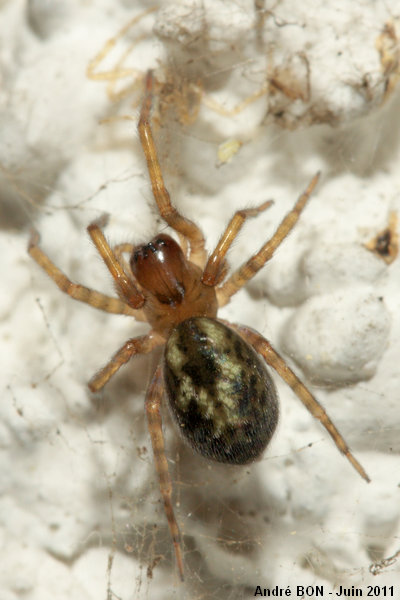
|
I have observed this spider on the outside wall of the house. |
| [To know more about the Amaurobius of the similis group] [Next picture] [Previous picture] [Top] |
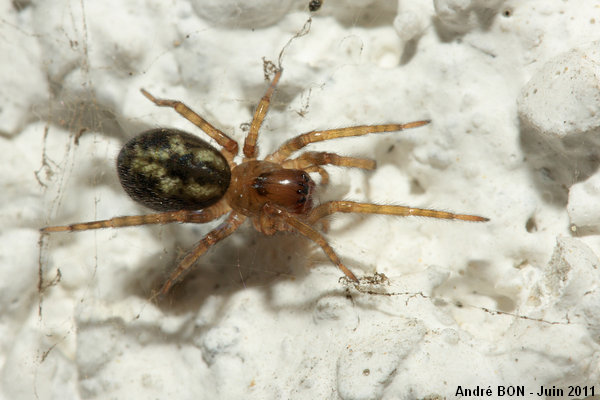
|
The V-shaped marks on the abdomen make me think to Amaurobius similis. Next time I will use graph paper to measure the body size of the spider. A length greater than 10 mm would confirm my guess. |
| [To know more about the Amaurobius of the similis group] [Next picture] [Previous picture] [Top] |
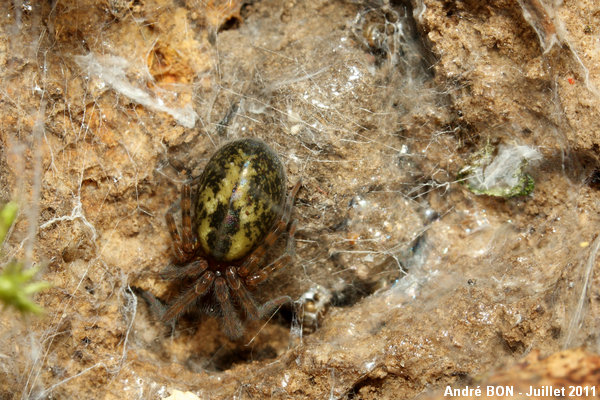
|
I have observed this spider of the Amaurobius genus and its nice cribellate web by looking under one stone in the garden. |
| [To know more about the Amaurobius of the similis group] [Next picture] [Previous picture] [Top] |
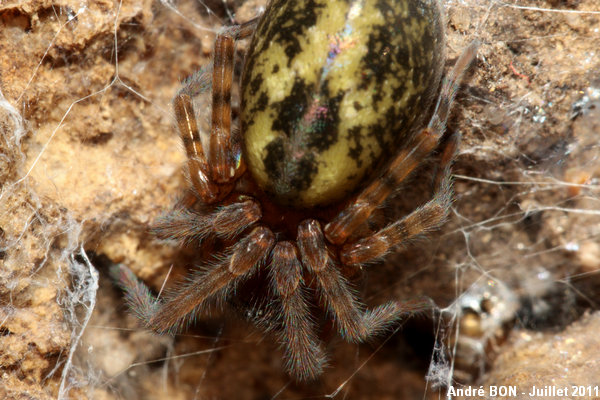
|
The tarsi of the spiders belonging to the Amaurobius genus show trichobothria (long and mobile setae which are sensitive to vibrations) which are longer than the general pubescence. They are clearly visible on this picture. |
| [To know more about the Amaurobius of the similis group] [Next picture] [Previous picture] [Top] |
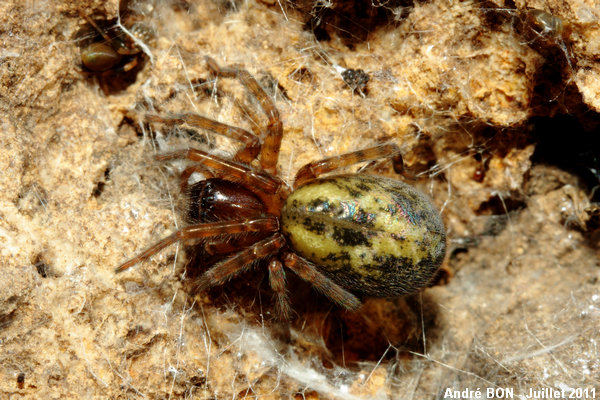
|
It should had been easy to measure the size of the body. I haven't done it this times. I am regretting a little. |
| [To know more about the Amaurobius of the similis group] [Next picture] [Previous picture] [Top] |
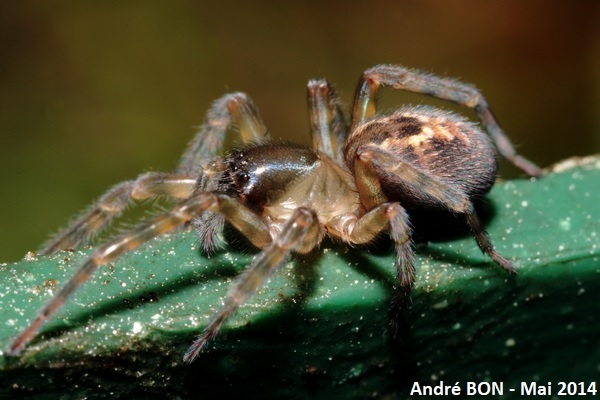
|
General close-up view for this spider observed in my compost tank. |
| [To know more about the Amaurobius of the similis group] [Next picture] [Previous picture] [Top] |
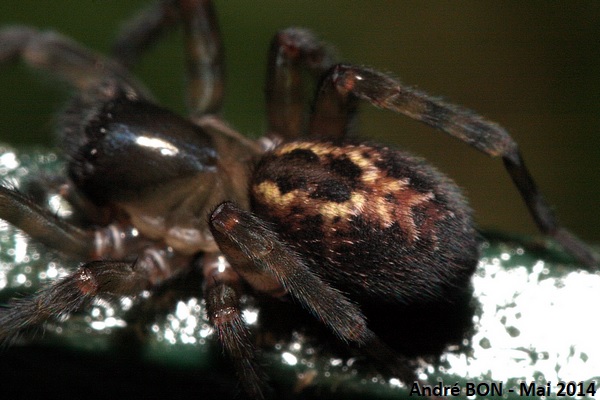
|
Close-up view of the short hairs covering the abdomen. |
| [To know more about the Amaurobius of the similis group] [Next picture] [Previous picture] [Top] |
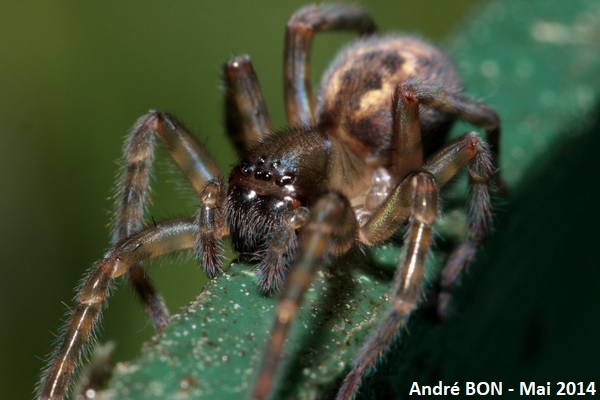
|
With this picture you can better see the eye-pattern which is often typical of the family. |
| [To know more about the Amaurobius of the similis group] [Next picture] [Previous picture] [Top] |
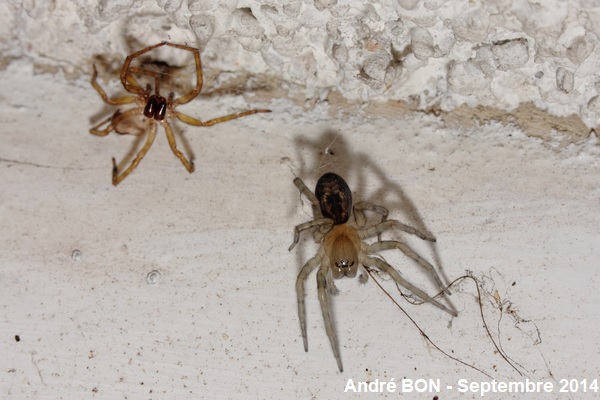
|
Spiders must moult while growing. I have observed this one just after moulting. The old skin or exuviae (remains of exoskeleton) is close to it. |
| [To know more about the Amaurobius of the similis group] [Next picture] [Previous picture] [Top] |

|
The new skin (or exoskeleton) will dry and get its final colours. |
| [To know more about the Amaurobius of the similis group] [Next picture] [Previous picture] [Top] |
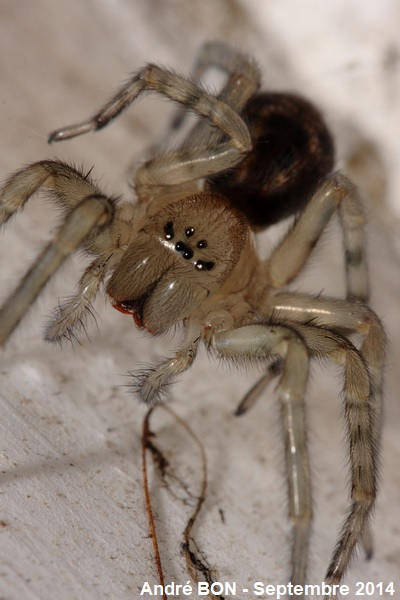
|
Close-up view. |
| [To know more about the Amaurobius of the similis group] [Next picture] [Previous picture] [Top] |

|
Here is one male with its large pedipalps. The rather thin apophysis which protrude form the lower pedipalp seems to indicate Amaurobius similis. Amaurobius fenestralis shows an apophysis which is thicker at the base. It would be great to have a confirmation by an expert. |
| [To know more about the Amaurobius of the similis group] [Next picture] [Previous picture] [Top] |
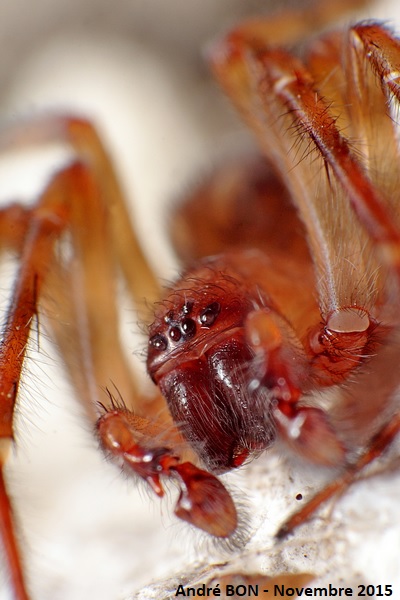
|
Another front view. Is this picture of a male's pedipalp enough to point to one of the two species? |
| [To know more about the Amaurobius of the similis group] [Previous picture] [Top] |

|
Another view of a male's pedipalps. |